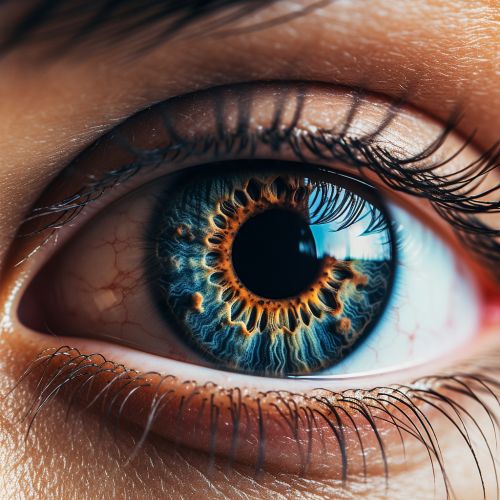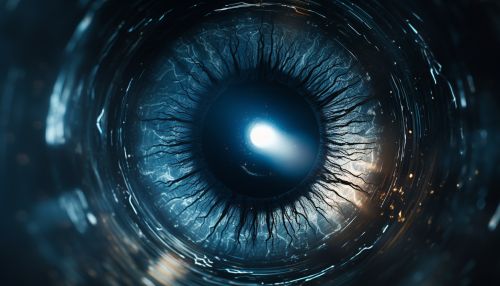Pupil
Anatomy of the Pupil
The human eye is a complex organ that allows us to perceive light and color. At the center of the eye lies the pupil, a small, black circular opening in the iris, the colored part of the eye. The pupil's primary function is to control the amount of light that enters the eye. It does so by contracting (becoming smaller) in bright light and dilating (becoming larger) in dim light. This process, known as pupillary reflex, is an automatic response controlled by the autonomic nervous system.


Physiology of the Pupil
The size of the pupil is controlled by two muscles: the sphincter pupillae and the dilator pupillae. The sphincter pupillae, a circular muscle, contracts to decrease the size of the pupil, while the dilator pupillae, a radial muscle, expands to increase the size of the pupil. These muscles are innervated by the parasympathetic and sympathetic divisions of the autonomic nervous system, respectively.
Pupillary Reflexes
The pupillary light reflex and the accommodation reflex are two primary reflexes involving the pupil. The pupillary light reflex is a response to changes in ambient light, while the accommodation reflex is a response to changes in the distance of the object being viewed.
Clinical Significance of the Pupil
The size, shape, and reactivity of the pupil can provide valuable information about a person's health. Abnormalities in these aspects can indicate a variety of conditions, such as neurological disorders, drug use, or damage to the eye. For example, anisocoria, a condition where the two pupils are of unequal size, can be a sign of a number of medical conditions, including stroke, brain injury, or diseases of the nervous system.
Pupil Size and Emotion
Research has shown that the size of the pupil can also be influenced by emotional states. For example, the pupils may dilate when a person is experiencing strong emotions such as fear or excitement. This is thought to be a part of the body's fight-or-flight response, preparing the individual to respond to a perceived threat or opportunity.
Pupil in Other Species
While this article primarily focuses on the human pupil, it's important to note that the structure and function of the pupil can vary greatly among different species. For example, some animals, such as cats and snakes, have slit-shaped pupils, which can provide superior depth perception and allow for more precise control over the amount of light entering the eye.
